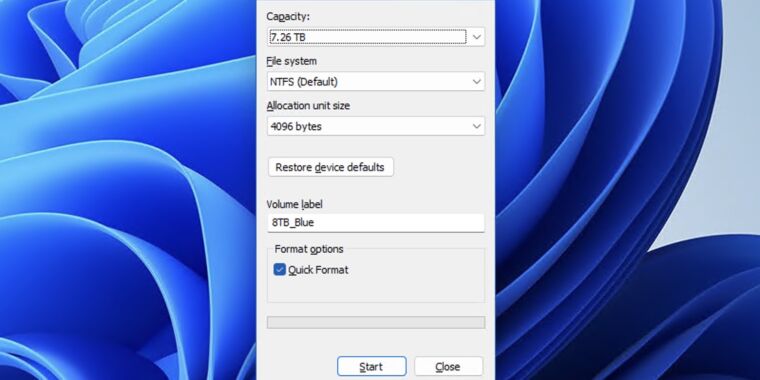Evolution of Windows 11 User Interface
Windows 11 has undergone significant changes to modernize various aspects of its user interface, updating long-ignored components to align with current design standards. While many Settings menus and classic applications like Notepad and Paint have received makeovers, there are still remnants of the past hidden deep within the operating system.
A Blast from the Past: The Format Dialogue Box
One such relic is the Format dialog box, as revealed by former Microsoft programmer Dave Plummer. This dialog box, dating back to late 1994, is still in use today when formatting disks in Windows Explorer. Plummer shared insights into the development of this aged interface element, shedding light on its origins during a transitional period in Windows’ evolution.
During the migration of user interfaces from Windows 95 to Windows NT 4.0, Plummer faced the challenge of creating a custom UI for disk formatting due to differences between the two operating systems. While specific details about these variances were not disclosed, the need for tailored solutions in areas like filesystems and disk formatting emerged.
Plummer’s pragmatic approach to crafting the Format dialog involved listing all formatting options on paper and translating them into a straightforward vertical layout using Visual C++ 2.0. Despite its functional simplicity, this rudimentary design has persisted for over three decades, serving as a reminder of temporary solutions that stand the test of time.
Enduring Legacies of Windows NT
The presence of the Windows NT version of the Format dialog in current Windows 11 installations reflects the integration of NT codebase elements into subsequent Windows releases. Labels like “Windows NT” embedded in critical system files underscore the lasting influence of this foundational architecture on modern Windows iterations.
Interestingly, Plummer highlighted an arbitrary decision made during the Format tool’s development, resulting in a 32GB limit for FAT volumes. Despite technological advancements enabling larger storage capacities, remnants of past constraints persist in today’s Windows systems, hinting at the historical context of hardware limitations from the ’90s.
Plummer’s contributions to various ’90s and early 2000s MS-DOS and Windows applications, including the Task Manager and Space Cadet Pinball game, showcase his legacy within Microsoft’s software ecosystem. His departure from the company in 2003 marked the end of an era defined by pioneering innovations and enduring software solutions.
In conclusion, the evolution of Windows 11’s user interface encompasses a blend of modernization and historical preservation, highlighting the intricate journey of software development across different eras.
For more information, is available on Twitter.
Image/Photo credit: source url





